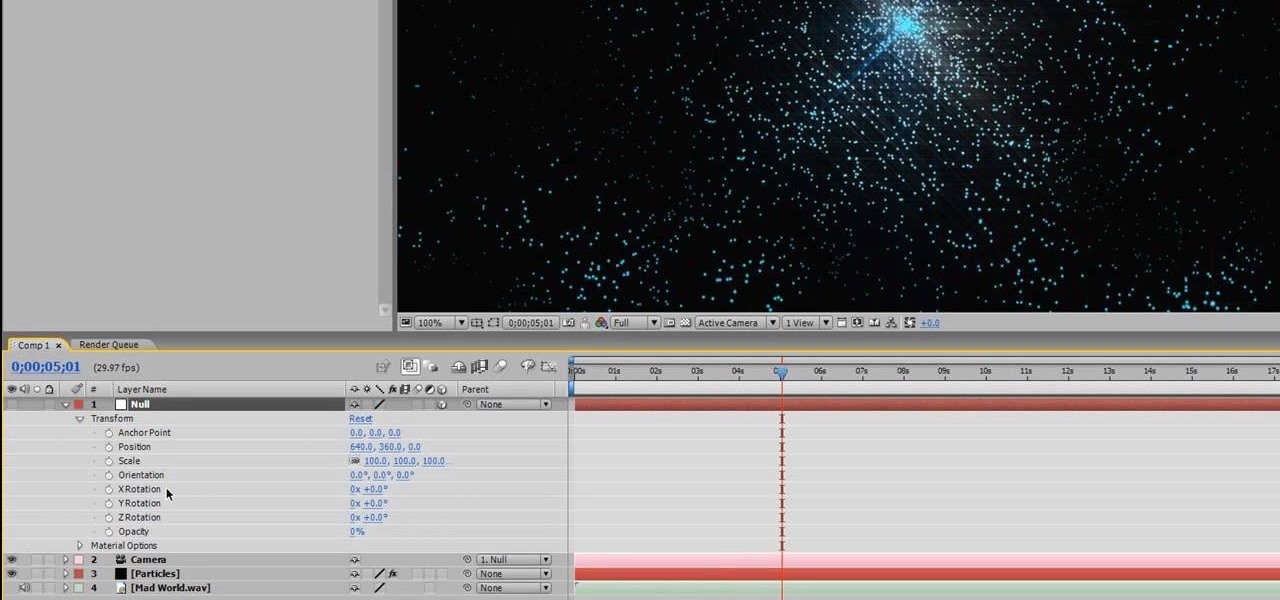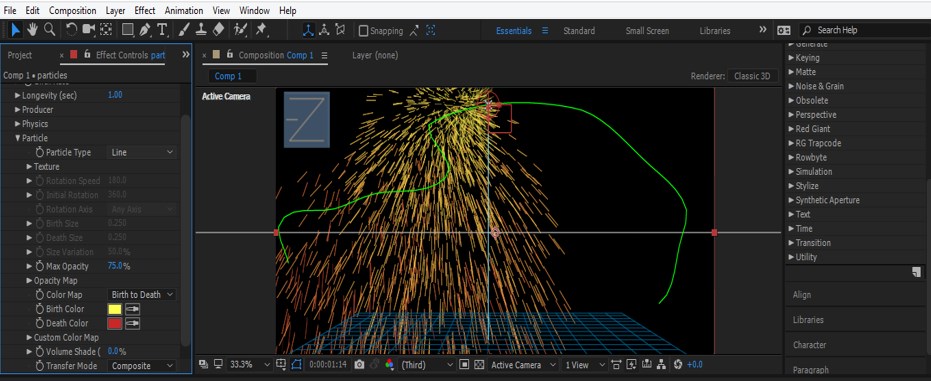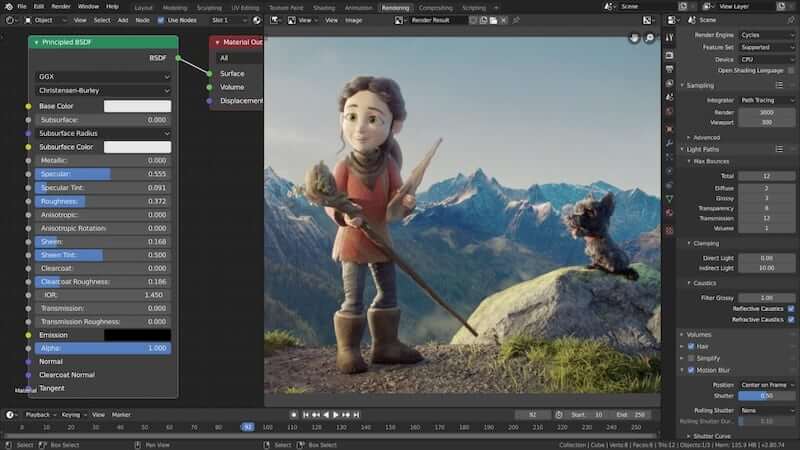The main body of the simulation is a Stack, and each particle widget is wrapped in Positioned to represent an x,y coordinate system. The movement is controlled by an explicit animation. Each particle is has its own Animatable (the super-class of Tween), and all operate with the same controller. HTML5 Canvas Particle Animation. Holy moly, that looks amazing. Not only is the design great and the colors are just about perfect, but those little sparkles are crazy! Make a particle system in HTML5 canvas. The particles are basically made of simple circles with radial gradients and random properties for velocity, size and color.
Fluid animation refers to computer graphics techniques for generating realistic animations of fluids such as water and smoke.[1] Fluid animations are typically focused on emulating the qualitative visual behavior of a fluid, with less emphasis placed on rigorously correct physical results, although they often still rely on approximate solutions to the Euler equations or Navier–Stokes equations that govern real fluid physics. Fluid animation can be performed with different levels of complexity, ranging from time-consuming, high-quality animations for films, or visual effects, to simple and fast animations for real-time animations like computer games.[2]
Relationship to computational fluid dynamics[edit]
Fluid animation differs from computational fluid dynamics (CFD) in that fluid animation is used primarily for visual effects, whereas computational fluid dynamics is used to study the behavior of fluids in a scientifically rigorous way.
Development[edit]
The development of fluid animation techniques based on the Navier–Stokes equations began in 1996, when Nick Foster and Dimitris Metaxas[3] implemented solutions to 3D Navier-Stokes equations in a computer graphics context, basing their work on a scientific CFD paper by Harlow and Welch from 1965.[4] Up to that point, a variety of simpler methods had primarily been used, including ad-hoc particle systems,[5] lower dimensional techniques such as height fields,[6] and semi-random turbulent noise fields.[7]

In 1999, Jos Stam published the 'Stable Fluids'[8] method, which exploited a semi-Lagrangian advection technique and implicit integration of viscosity to provide unconditionally stable behaviour. This allowed for much larger time steps and therefore faster simulations. This general technique was extended by Ronald Fedkiw and co-authors to handle more realistic smoke[9] and fire,[10] as well as complex 3D water simulations using variants of the level-set method.[11][12]
Some notable academic researchers in this area include Jerry Tessendorf, James F. O'Brien, Ron Fedkiw, Mark Carlson, Greg Turk, Robert Bridson, Ken Museth, and Jos Stam.[citation needed]
Software[edit]
Many 3D computer graphics programs implement fluid animation techniques. RealFlow is a standalone commercial package that has been used to produce visual effects in movies, television shows, commercials, and games.[citation needed] RealFlow implements a fluid-implicit particle (FLIP; an extension of the Particle-in-cell method) solver, a hybrid grid, and a particle method that allows for advanced features such as foam and spray. Maya and Houdini are two other commercial 3D computer graphics programs that allow for fluid animation.
Blender is an open-source 3D computer graphics program that utilized a particle-based Lattice Boltzmann method for animating fluids[13] until the integration of the open-source mantaflow project in 2020 with a wide range of Navier-Stokes solver variants.[14]
See also[edit]
References[edit]
- ^Bridson, Robert. Fluid Simulation for Computer Graphics (2nd ed.). CRC Press.
- ^Mastin, Gary A.; Watterberg, Peter A.; Mareda, John F. (March 1987). 'Fourier Synthesis of Ocean Scenes'(PDF). IEEE Computer Graphics and Applications. 7 (3): 16–23. doi:10.1109/MCG.1987.276961.
- ^Foster, Nick; Metaxas, Dimitri (1996-09-01). 'Realistic Animation of Liquids'. Graphical Models and Image Processing. 58 (5): 471–483. CiteSeerX10.1.1.331.619. doi:10.1006/gmip.1996.0039.
- ^Harlow, Francis H.; Welch, J. Eddie (1965-12-01). 'Numerical Calculation of Time‐Dependent Viscous Incompressible Flow of Fluid with Free Surface'. Physics of Fluids. 8 (12): 2182–2189. doi:10.1063/1.1761178. ISSN0031-9171.
- ^Reeves, W. T. (1983-04-01). 'Particle Systems—a Technique for Modeling a Class of Fuzzy Objects'. ACM Trans. Graph. 2 (2): 91–108. CiteSeerX10.1.1.517.4835. doi:10.1145/357318.357320. ISSN0730-0301.
- ^Kass, Michael; Miller, Gavin (1990-01-01). Rapid, Stable Fluid Dynamics for Computer Graphics. Proceedings of the 17th Annual Conference on Computer Graphics and Interactive Techniques. SIGGRAPH '90. New York: ACM. pp. 49–57. doi:10.1145/97879.97884. ISBN978-0897913447.
- ^Stam, Jos; Fiume, Eugene (1993-01-01). Turbulent Wind Fields for Gaseous Phenomena. Proceedings of the 20th Annual Conference on Computer Graphics and Interactive Techniques. SIGGRAPH '93. New York: ACM. pp. 369–376. doi:10.1145/166117.166163. ISBN978-0897916011.
- ^Stam, Jos (1999-01-01). Stable Fluids. Proceedings of the 26th Annual Conference on Computer Graphics and Interactive Techniques. SIGGRAPH '99. New York: ACM Press/Addison-Wesley Publishing Co. pp. 121–128. doi:10.1145/311535.311548. ISBN978-0201485608.
- ^Fedkiw, Ronald; Stam, Jos; Jensen, Henrik Wann (2001-01-01). Visual Simulation of Smoke. Proceedings of the 28th Annual Conference on Computer Graphics and Interactive Techniques. SIGGRAPH '01. New York: ACM. pp. 15–22. CiteSeerX10.1.1.29.2220. doi:10.1145/383259.383260. ISBN978-1581133745.
- ^Nguyen, Duc Quang; Fedkiw, Ronald; Jensen, Henrik Wann (2002-01-01). Physically Based Modeling and Animation of Fire. Proceedings of the 29th Annual Conference on Computer Graphics and Interactive Techniques. SIGGRAPH '02. New York: ACM. pp. 721–728. doi:10.1145/566570.566643. ISBN978-1581135213.
- ^Foster, Nick; Fedkiw, Ronald (2001-01-01). Practical Animation of Liquids. Proceedings of the 28th Annual Conference on Computer Graphics and Interactive Techniques. SIGGRAPH '01. New York, NY, USA: ACM. pp. 23–30. CiteSeerX10.1.1.21.932. doi:10.1145/383259.383261. ISBN978-1581133745.
- ^Enright, Douglas; Marschner, Stephen; Fedkiw, Ronald (2002-01-01). Animation and Rendering of Complex Water Surfaces. Proceedings of the 29th Annual Conference on Computer Graphics and Interactive Techniques. SIGGRAPH '02. New York: ACM. pp. 736–744. CiteSeerX10.1.1.19.6229. doi:10.1145/566570.566645. ISBN978-1581135213.
- ^'Doc:2.4/Manual/Physics/Fluid - BlenderWiki'. wiki.blender.org. Retrieved 2016-11-04.
- ^'Reference/Release Notes/2.82 - Blender Developer Wiki'. wiki.blender.org. Retrieved 2020-06-10.
External links[edit]
Create Stream Particle Animations
Projectile Path Over Time
This example shows how to display the path of a projectile as a function of time using a three-dimensional quiver plot.

Show the path of the following projectile using constants for velocity and acceleration, vz and a. Calculate z as the height as time varies from 0 to 1.
Calculate the position in the x-direction and y-direction.
Compute the components of the velocity vectors and display the vectors using a 3-D quiver plot. Change the viewpoint of the axes to [70,18].
What Particle Animations Can Show
A stream particle animation is useful for visualizing the flow direction and speed of a vector field. The 'particles' (represented by any of the line markers) trace the flow along a particular stream line. The speed of each particle in the animation is proportional to the magnitude of the vector field at any given point along the stream line.
1. Specify Starting Points of the Data Range
This example determines the region of the volume to plot by specifying the appropriate starting points. In this case, the stream plots begin at x = 100 and y spans 20 to 50 in the z = 5 plane, which is not the full volume bounds.
2. Create Stream Lines to Indicate Particle Paths
This example uses stream lines (stream3, streamline) to trace the path of the animated particles, which adds a visual context for the animation.
3. Define the View


While all the stream lines start in the z = 5 plane, the values of some spiral down to lower values. The following settings provide a clear view of the animation:
The viewpoint (
view) selected shows both the plane containing most stream lines and the spiral.Selecting a data aspect ratio (
daspect) of[2 2 0.125]provides greater resolution in the z-direction to make the stream particles more easily visible in the spiral.Set the axes limits to match the data limits (
axis) and draw the axis box (box).
4. Calculate the Stream Particle Vertices

In 1999, Jos Stam published the 'Stable Fluids'[8] method, which exploited a semi-Lagrangian advection technique and implicit integration of viscosity to provide unconditionally stable behaviour. This allowed for much larger time steps and therefore faster simulations. This general technique was extended by Ronald Fedkiw and co-authors to handle more realistic smoke[9] and fire,[10] as well as complex 3D water simulations using variants of the level-set method.[11][12]
Some notable academic researchers in this area include Jerry Tessendorf, James F. O'Brien, Ron Fedkiw, Mark Carlson, Greg Turk, Robert Bridson, Ken Museth, and Jos Stam.[citation needed]
Software[edit]
Many 3D computer graphics programs implement fluid animation techniques. RealFlow is a standalone commercial package that has been used to produce visual effects in movies, television shows, commercials, and games.[citation needed] RealFlow implements a fluid-implicit particle (FLIP; an extension of the Particle-in-cell method) solver, a hybrid grid, and a particle method that allows for advanced features such as foam and spray. Maya and Houdini are two other commercial 3D computer graphics programs that allow for fluid animation.
Blender is an open-source 3D computer graphics program that utilized a particle-based Lattice Boltzmann method for animating fluids[13] until the integration of the open-source mantaflow project in 2020 with a wide range of Navier-Stokes solver variants.[14]
See also[edit]
References[edit]
- ^Bridson, Robert. Fluid Simulation for Computer Graphics (2nd ed.). CRC Press.
- ^Mastin, Gary A.; Watterberg, Peter A.; Mareda, John F. (March 1987). 'Fourier Synthesis of Ocean Scenes'(PDF). IEEE Computer Graphics and Applications. 7 (3): 16–23. doi:10.1109/MCG.1987.276961.
- ^Foster, Nick; Metaxas, Dimitri (1996-09-01). 'Realistic Animation of Liquids'. Graphical Models and Image Processing. 58 (5): 471–483. CiteSeerX10.1.1.331.619. doi:10.1006/gmip.1996.0039.
- ^Harlow, Francis H.; Welch, J. Eddie (1965-12-01). 'Numerical Calculation of Time‐Dependent Viscous Incompressible Flow of Fluid with Free Surface'. Physics of Fluids. 8 (12): 2182–2189. doi:10.1063/1.1761178. ISSN0031-9171.
- ^Reeves, W. T. (1983-04-01). 'Particle Systems—a Technique for Modeling a Class of Fuzzy Objects'. ACM Trans. Graph. 2 (2): 91–108. CiteSeerX10.1.1.517.4835. doi:10.1145/357318.357320. ISSN0730-0301.
- ^Kass, Michael; Miller, Gavin (1990-01-01). Rapid, Stable Fluid Dynamics for Computer Graphics. Proceedings of the 17th Annual Conference on Computer Graphics and Interactive Techniques. SIGGRAPH '90. New York: ACM. pp. 49–57. doi:10.1145/97879.97884. ISBN978-0897913447.
- ^Stam, Jos; Fiume, Eugene (1993-01-01). Turbulent Wind Fields for Gaseous Phenomena. Proceedings of the 20th Annual Conference on Computer Graphics and Interactive Techniques. SIGGRAPH '93. New York: ACM. pp. 369–376. doi:10.1145/166117.166163. ISBN978-0897916011.
- ^Stam, Jos (1999-01-01). Stable Fluids. Proceedings of the 26th Annual Conference on Computer Graphics and Interactive Techniques. SIGGRAPH '99. New York: ACM Press/Addison-Wesley Publishing Co. pp. 121–128. doi:10.1145/311535.311548. ISBN978-0201485608.
- ^Fedkiw, Ronald; Stam, Jos; Jensen, Henrik Wann (2001-01-01). Visual Simulation of Smoke. Proceedings of the 28th Annual Conference on Computer Graphics and Interactive Techniques. SIGGRAPH '01. New York: ACM. pp. 15–22. CiteSeerX10.1.1.29.2220. doi:10.1145/383259.383260. ISBN978-1581133745.
- ^Nguyen, Duc Quang; Fedkiw, Ronald; Jensen, Henrik Wann (2002-01-01). Physically Based Modeling and Animation of Fire. Proceedings of the 29th Annual Conference on Computer Graphics and Interactive Techniques. SIGGRAPH '02. New York: ACM. pp. 721–728. doi:10.1145/566570.566643. ISBN978-1581135213.
- ^Foster, Nick; Fedkiw, Ronald (2001-01-01). Practical Animation of Liquids. Proceedings of the 28th Annual Conference on Computer Graphics and Interactive Techniques. SIGGRAPH '01. New York, NY, USA: ACM. pp. 23–30. CiteSeerX10.1.1.21.932. doi:10.1145/383259.383261. ISBN978-1581133745.
- ^Enright, Douglas; Marschner, Stephen; Fedkiw, Ronald (2002-01-01). Animation and Rendering of Complex Water Surfaces. Proceedings of the 29th Annual Conference on Computer Graphics and Interactive Techniques. SIGGRAPH '02. New York: ACM. pp. 736–744. CiteSeerX10.1.1.19.6229. doi:10.1145/566570.566645. ISBN978-1581135213.
- ^'Doc:2.4/Manual/Physics/Fluid - BlenderWiki'. wiki.blender.org. Retrieved 2016-11-04.
- ^'Reference/Release Notes/2.82 - Blender Developer Wiki'. wiki.blender.org. Retrieved 2020-06-10.
External links[edit]
Create Stream Particle Animations
Projectile Path Over Time
This example shows how to display the path of a projectile as a function of time using a three-dimensional quiver plot.
Show the path of the following projectile using constants for velocity and acceleration, vz and a. Calculate z as the height as time varies from 0 to 1.
Calculate the position in the x-direction and y-direction.
Compute the components of the velocity vectors and display the vectors using a 3-D quiver plot. Change the viewpoint of the axes to [70,18].
What Particle Animations Can Show
A stream particle animation is useful for visualizing the flow direction and speed of a vector field. The 'particles' (represented by any of the line markers) trace the flow along a particular stream line. The speed of each particle in the animation is proportional to the magnitude of the vector field at any given point along the stream line.
1. Specify Starting Points of the Data Range
This example determines the region of the volume to plot by specifying the appropriate starting points. In this case, the stream plots begin at x = 100 and y spans 20 to 50 in the z = 5 plane, which is not the full volume bounds.
2. Create Stream Lines to Indicate Particle Paths
This example uses stream lines (stream3, streamline) to trace the path of the animated particles, which adds a visual context for the animation.
3. Define the View
While all the stream lines start in the z = 5 plane, the values of some spiral down to lower values. The following settings provide a clear view of the animation:
The viewpoint (
view) selected shows both the plane containing most stream lines and the spiral.Selecting a data aspect ratio (
daspect) of[2 2 0.125]provides greater resolution in the z-direction to make the stream particles more easily visible in the spiral.Set the axes limits to match the data limits (
axis) and draw the axis box (box).
4. Calculate the Stream Particle Vertices
Javascript Particle Animation
Determine the vertices along the stream line where a particle will be drawn. The interpstreamspeed function returns this data based on the stream line vertices and the speed of the vector data. This example scales the velocities by 0.05 to increase the number of interpolated vertices.
Set the axes SortMethod property to childorder so the animation runs faster.
Particle Animation Program Download
The streamparticles function sets the following properties:
Particle Animation Program Free
Animateto10to run the animation 10 times.ParticleAlignmenttoonto start all particle traces together.MarkerEdgeColortononeto draw only the face of the circular marker. Animations usually run faster when marker edges are not drawn.MarkerFaceColortored.Markertoo, which draws a circular marker. You can use other line markers as well.
